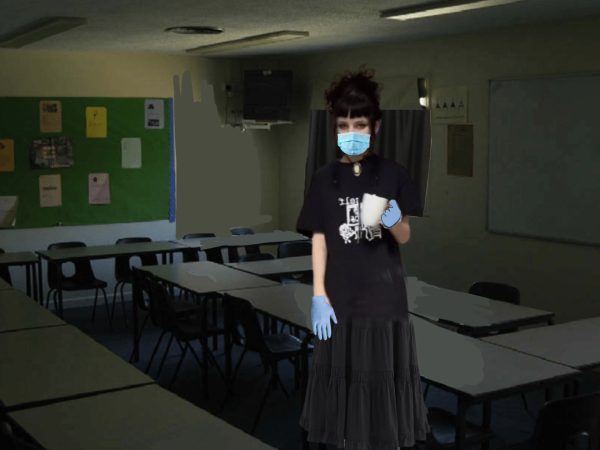Elevator Works
Chamblee High School has seen it all: fires, tornadoes, violent threats — the works. Its students have learned to expect and prepare for these events in advance, for they’re bound to happen at some point or another.
But on March 15, 2017, the unthinkable happened: the elevator worked. Though students here at Chamblee have witnessed all kinds of surprises in their school careers, none have been quite as shocking as this.
Sophomore Marsha Moth was coming back from her class in the neighboring Fine Arts building when she noticed someone entering the elevator.
“They were goners the moment they entered that death machine,” said Moth. “Or, so I thought. I didn’t have time to stay and watch what happened next, but I couldn’t help but think that whoever went in there wouldn’t make it out alive, whether it be because of the elevator malfunctioning, or the administration forcing the elevator’s malfunction, as punishment for trying to use it.”
She witnessed a custodian rush toward the closing elevator doors in a futile attempt to pull the children to safety. But he was too late, and began pounding on the metal doors screaming: “Why? Why!? Why?!”
But, remarkably, nobody was injured, according to senior Jonathan Baxter.
“The elevator came back down and somebody got out of it. There were audible gasps from around the room,” said Baxter. “But, it’s still not fully functional. It seems to only work if someone who doesn’t actually need to use it pushes the button. If you’re on crutches, or in a wheelchair, you may as well give up now, because that elevator will not be serving you.”
The repairing of the elevator was not only shocking to the students; it was also quite shocking to the administration.
“We had absolutely no clue that the elevator was working again. It’s a wonder,” said the head administrator Kendra Dickerson. “We didn’t even put any resources into fixing it, since we figured it was a lost cause. We’d much rather put our limited funds into something fruitful, like another crucial assembly on the dangers of bullying.”
Dickerson was ecstatic to see the elevator working again.
“Since the elevator was broken, members of the staff would take turns hauling injured students up and down to their classes,” said Dickerson. “For some of the staff, it was no problem, but it was really starting to hurt my back. My knees would buckle with every step.”
Dickerson does not entirely trust the elevator to work without a hitch in the future, though.
“The elevator has broken so many times before; luckily, nobody has been on it when it has broken,” said Dickerson. “But, we can’t take any chances. For the next few weeks, we will be repeatedly testing how much weight the elevator can handle using things like dummies, weights, and some of our less valuable staff members.”
Problems with the elevator began soon after the school opened two years ago. At first, they were small, inconvenient ones: the third floor button would not work, the doors did not close all the way, the inside smelled like pineapple. But the elevator became more and more untrustworthy, frequently trapping staff members inside for hours, or delivering them to the sub-basement where no one but Mr. Anderson is allowed to go.
Most infamously, former English teacher Ian Bickpentameter was trapped in the elevator after school on Friday in October 2016. He spent the weekend locked inside with no one to hear his pleas for help and over 100 student essays on the use of figurative language in “Trees” by Joyce Kilmer to grade.
Bickpentameter was rescued when school reopened, but was not the same person he was when he stepped into the elevator. And he smelled like pineapples. His family reports he is resting and should be out of his straightjacket by 2022.
Nevertheless, Social Studies teacher Barbara Brown-Beige could hardly contain her excitement about the possibility of riding the elevator again.
“The elevator is the one place that I can retreat to during the school day to escape the hordes of kids in the hall. Every time I enter it, I get a high by just knowing that I’m bypassing the sluggish teens clogging up the hallways. It feeds my superiority complex,” said Brown-Beige. “So, when the elevator broke for the first time, so did my heart. I was a wreck. For weeks, I would have to bring a jumbo box of Kleenex with me as I trudged up the stairs.”
Brown-Beige eventually got used to it, though.
“With time, I was able to pick up the shattered pieces and put myself back together. It took three months, some major therapy, and just a bit of anesthesia, but I found the strength to get over it and make it up those stairs,” said Brown-Beige.
That being said, Brown-Beige has a warning for any future potential elevator riders.
“I’d just like to make one thing clear,” said Brown-Beige. “I will not go back to the way we were forced to live — no, forced to survive — when it was broken. My fellow teachers and students, heed my advice: Do not break the elevator, unless you wish to also be broken.”
This story is a work of parody, satire, and humor and is for entertainment purposes only. Said story may or may not use real names, always in semi-real and/or mostly, or substantially, fictitious ways. Any resemblance to persons, living or dead, is entirely coincidental or is intended purely as a satire, parody or spoof of such persons and is not intended to communicate any true or factual information about that person.
Your donation will support the student journalists of Chamblee High School Blue & Gold. Your contribution will allow us to print editions of our work and cover our annual website hosting costs. Currently, we are working to fund a Halloween satire edition.

Senior Ethan Rotnem is an editor-in-chief. He enjoys walking his dog, recommending music to his friends, and looking at cities on Google Maps. This is his third year on the staff.




